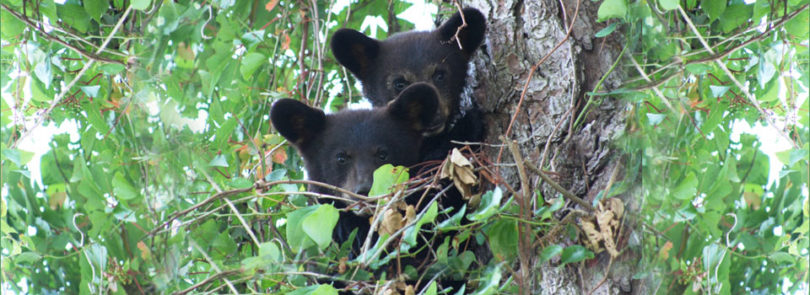UGA researchers have received a combined $701,000 in state grants to study the black bear population in middle Georgia-of particular concern in light of plans to widen a 15-mile stretch of road through a portion of the animal’s habitat.
The joint project, headed by scientists in the UGA Warnell School of Forestry and Natural Resources, will focus on evaluating the effects of widening state Route 96 on bear movements while also estimating the size of the population in several counties, assessing their survival rates and studying their reproductive patterns.
The Georgia Wildlife Resources Division through the Wildlife Restoration Program committed $324,000, and the Georgia Department of Transportation is funding the research at $377,000. The joint project is expected to take three years. Michael Chamberlain, Karl Miller and Robert Warren-all wildlife researchers at the Warnell School-will be conducting the study with graduate students Mike Hooker and Josh Sylvest.
As part of the research, black bears will be trapped, tagged for radio-telemetry tracking and identified by their DNA using hair samples, and their dens will be monitored.
“The bear population in middle Georgia is among the most isolated populations in the southeastern U.S., so it is particularly susceptible to changes in land use and human activities,” Chamberlain said. “To ensure sustainable management of this bear population, it is critical to keep tabs on patterns of survival and reproduction and to assess how environmental factors influence this sustainability.”
The black bear population in the U.S. is very fragmented, he said, and the area it once occupied is now 90 percent uninhabitable to the bears. Most populations are found on public land.
Georgia has three distinct black bear populations: in the Appalachian Mountains, near the Ocmulgee River drainage system and near the Okefenokee Swamp. The Ocmulgee population numbers about 300 bears, although an earlier estimate put that figure at 200. The Warnell School researchers plan to conduct another population estimate on black bears within the Ocmulgee River region, including private land in Twiggs, Houston, Bibb, Bleckley and Pulaski counties. They also plan to assess the survival rates and the reproductive ecology by studying den selection, cub production and cub survival.
Researchers also are investigating ways to minimize potential effects of the widening of state Route 96. This 15-mile section will be expanded from two lanes to a four-lane connection between Interstate 16 and I-75, passing through a known habitat area for the central Georgia black bear population, which is the smallest in the state. Between 2003 and 2009, 10 of the 20 confirmed black bears killed by collisions with vehicles were along this stretch of road.
Widening state Route 96 will increase how much paved surface bears must cross. Because of this, the Georgia DOT included seven underpasses in the design with the hopes of providing bears with safer crossings. The UGA researchers will monitor the movements of a sample of collared bears to verify that the bear underpasses are placed in the appropriate locations.
“This is an important public safety issue. For the underpasses to be effective, it only makes logical sense that their locations are determined by first understanding the natural movement paths of bears in this region,” Miller said.
The team plans to track the bears to determine their movements, particularly around the roadway corridor. Upon concluding this evaluation, the team will present the Georgia DOT with suggestions on wildlife corridors, underpass locations and recommendations of where to place fences that would funnel the bears to safer crossing locations.
Following the completion of this study and the construction of the underpasses, a proposed second phase of this project will assess the effectiveness of the underpasses allowing the bears to safely cross the roadway.
“Our joint research project will provide multiple benefits,” Warren said. “Our results will enable the Georgia DOT to improve state Route 96 in such a manner to decrease bear-vehicle collisions, avoid economic losses from damage to vehicles, and reduce injuries or death to both motorists and bears. Our data also will enable Georgia Wildlife Resources Division to better document the population ecology of this isolated bear population so that it can be managed sustainably in the future for the benefit of all Georgians.”




